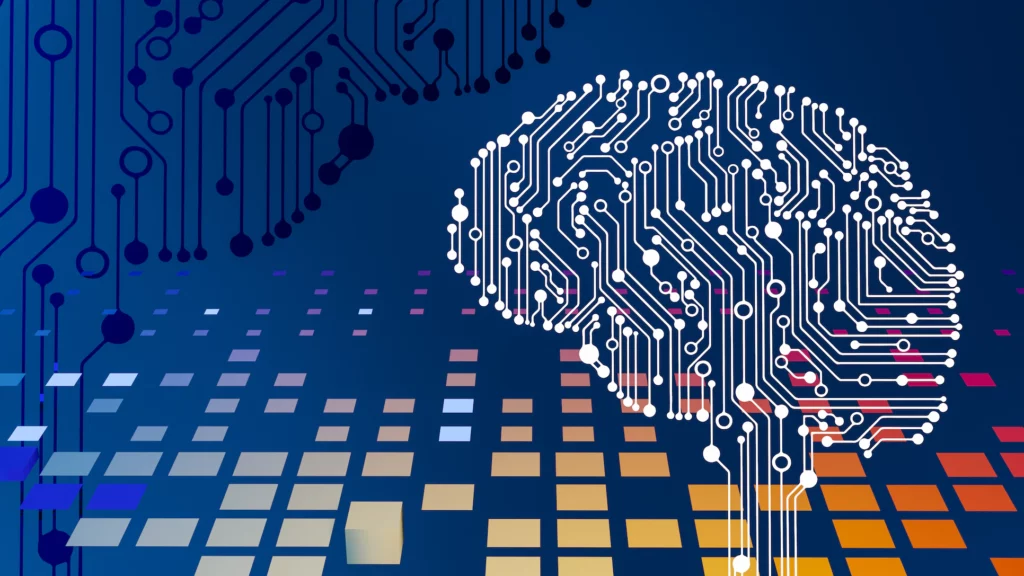

The cloud computing business is booming. Yet the massive uptick in cloud adoption seems like a drop in the ocean compared to what's been happening with AI, which has gone from a topic reserved for 1980s sci-fi thrillers set in dystopian futures to a fact of life and business in 2023.
While the more established cloud market is expected to double to more than $940 billion by 2026, the AI market is expected to grow to over $300 billion. Two IT markets experiencing massive growth over the same time period MUST mean they're competitors, right?
Some may see it that way, but we think there's another way to view them.
Cloud and AI technologies can indeed be viewed as competitive from a purely business perspective. It's natural to place them against each other given their respective meteoric rises. Yet if you dig a little deeper, it's clear that these technologies can be symbiotic rather than antagonistic.
AI -> Cloud
Modern cloud computing is capable of managing large-scale computational tasks, data storage and service delivery, allowing teams to access computing resources on-demand and pay for what they use, without having to manage the large resources associated with on-premises maintenance. With such massive amounts of data stored in VMs across the world, AI can lend a hand in making enterprises more scalable and cost effective.
AI is already being used as a form of "assisted intelligence" to automate tasks that are time-consuming when performed manually by "human intelligence". Processes such as data analysis can be managed by AI services - allowing for interpretations of data-driven insights without manual effort required from engineers in the cloud.
Cloud -> AI
Conversely, storing data in the cloud can be used to feed data to AI. The cloud is suited for running algorithms which can be used during AI training periods (typically when data demands are at their highest). This lets enterprises scale up or down to suit their needs by building infrastructure scaled for the maximum load needed when training AI algorithms. The benefits of this - increased scalability and cost-effectiveness without the same manual input - can be used to focus efforts on more innovative activities.
Then there's the recent concept of "Artificial Intelligence as a Service" or AIaaS. AIaaS is already happening in practice today - see AI-driven chatbots, in which cloud platforms can store and process data captured by chatbots.
Sounds good to us. But what are the positives and negatives of leveraging AI in the cloud?

Cost - Machine Learning models are usually run on machines utilizing multiple GPUs. When using public and/or private cloud to host these models, operational costs can be reduced. (Beware however, this might not always be the case).
Automation - Using AI in the cloud lets teams automate tasks like data analysis which frees up time for more innovative tasks. AI therefore streamlines workloads for engineers in network and cloud teams alike.
Productivity - Improving how we automate repetitive tasks naturally means increased productivity for network engineers and infrastructure managers alike. AI-based algorithms typically require time and effort to not only build, but also to test in production. Leveraging centrally managed cloud resources gives IT teams time back to focus on operational priorities for the future.
Complexity - Introducing AI into the cloud mix increases complexity, particularly for ensuring regulatory compliance. As AI allows for vast amounts of data to be processed at a given time, ensuring adherence to various regulatory guidelines, including GDPR and CCPA, becomes more difficult.
Dependency - Using AI for data analysis can lead to a dependency on AI technology. As they continue to become more ubiquitous, enterprises are more than likely to become increasingly reliant. If there's an outage, a system failure, or a security breach, this could potentially lead to widespread service disruption that some may struggle to rebound from without a proper alternative plan in place.
Transparency - Deep learning models are inherently complex (shock). This takes interpreting, diagnosing or addressing issues to a new level of complexity. Of course, this makes troubleshooting harder. As the number of AI users increases globally, the likelihood of issues occurring that require a deep understanding of AI models increases in step. Making AI models more transparent, or developing the ability to understand them more coherently is essential for the future.
There are clearly both advantages and disadvantages to leveraging AI technology in the cloud. It is clear to see though, that AI and the cloud are not competing forces. In fact, they can be seen as great complements to each other that, if used correctly, can provide a great boost for data analysis, management and automation.
This is without considering how these technologies, particularly AI, will evolve in the future, and how the disadvantages above will be addressed and resolved by innovators in the AI realm. As things stand though, the sky is the limit for this power couple in waiting.
Don't forget to head over to LinkedIn, where you can keep up with the latest developments from IP Fabric. Check out our blog here, where we regularly publish new content on all things networking.
The cloud computing business is booming. Yet the massive uptick in cloud adoption seems like a drop in the ocean compared to what's been happening with AI, which has gone from a topic reserved for 1980s sci-fi thrillers set in dystopian futures to a fact of life and business in 2023.
While the more established cloud market is expected to double to more than $940 billion by 2026, the AI market is expected to grow to over $300 billion. Two IT markets experiencing massive growth over the same time period MUST mean they're competitors, right?
Some may see it that way, but we think there's another way to view them.
Cloud and AI technologies can indeed be viewed as competitive from a purely business perspective. It's natural to place them against each other given their respective meteoric rises. Yet if you dig a little deeper, it's clear that these technologies can be symbiotic rather than antagonistic.
AI -> Cloud
Modern cloud computing is capable of managing large-scale computational tasks, data storage and service delivery, allowing teams to access computing resources on-demand and pay for what they use, without having to manage the large resources associated with on-premises maintenance. With such massive amounts of data stored in VMs across the world, AI can lend a hand in making enterprises more scalable and cost effective.
AI is already being used as a form of "assisted intelligence" to automate tasks that are time-consuming when performed manually by "human intelligence". Processes such as data analysis can be managed by AI services - allowing for interpretations of data-driven insights without manual effort required from engineers in the cloud.
Cloud -> AI
Conversely, storing data in the cloud can be used to feed data to AI. The cloud is suited for running algorithms which can be used during AI training periods (typically when data demands are at their highest). This lets enterprises scale up or down to suit their needs by building infrastructure scaled for the maximum load needed when training AI algorithms. The benefits of this - increased scalability and cost-effectiveness without the same manual input - can be used to focus efforts on more innovative activities.
Then there's the recent concept of "Artificial Intelligence as a Service" or AIaaS. AIaaS is already happening in practice today - see AI-driven chatbots, in which cloud platforms can store and process data captured by chatbots.
Sounds good to us. But what are the positives and negatives of leveraging AI in the cloud?

Cost - Machine Learning models are usually run on machines utilizing multiple GPUs. When using public and/or private cloud to host these models, operational costs can be reduced. (Beware however, this might not always be the case).
Automation - Using AI in the cloud lets teams automate tasks like data analysis which frees up time for more innovative tasks. AI therefore streamlines workloads for engineers in network and cloud teams alike.
Productivity - Improving how we automate repetitive tasks naturally means increased productivity for network engineers and infrastructure managers alike. AI-based algorithms typically require time and effort to not only build, but also to test in production. Leveraging centrally managed cloud resources gives IT teams time back to focus on operational priorities for the future.
Complexity - Introducing AI into the cloud mix increases complexity, particularly for ensuring regulatory compliance. As AI allows for vast amounts of data to be processed at a given time, ensuring adherence to various regulatory guidelines, including GDPR and CCPA, becomes more difficult.
Dependency - Using AI for data analysis can lead to a dependency on AI technology. As they continue to become more ubiquitous, enterprises are more than likely to become increasingly reliant. If there's an outage, a system failure, or a security breach, this could potentially lead to widespread service disruption that some may struggle to rebound from without a proper alternative plan in place.
Transparency - Deep learning models are inherently complex (shock). This takes interpreting, diagnosing or addressing issues to a new level of complexity. Of course, this makes troubleshooting harder. As the number of AI users increases globally, the likelihood of issues occurring that require a deep understanding of AI models increases in step. Making AI models more transparent, or developing the ability to understand them more coherently is essential for the future.
There are clearly both advantages and disadvantages to leveraging AI technology in the cloud. It is clear to see though, that AI and the cloud are not competing forces. In fact, they can be seen as great complements to each other that, if used correctly, can provide a great boost for data analysis, management and automation.
This is without considering how these technologies, particularly AI, will evolve in the future, and how the disadvantages above will be addressed and resolved by innovators in the AI realm. As things stand though, the sky is the limit for this power couple in waiting.
Don't forget to head over to LinkedIn, where you can keep up with the latest developments from IP Fabric. Check out our blog here, where we regularly publish new content on all things networking.




